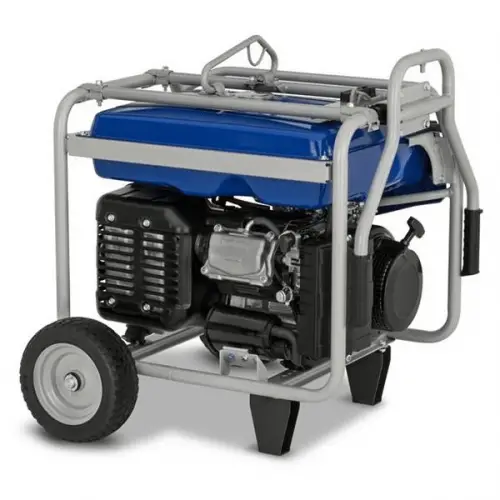Contrary to popular belief, a motor and a generator operate in reverse patterns. While all motors can function as generators, the purpose and working mechanism of these pieces of machinery are completely different.
Summary Table
| Motor | Generator |
| Converts electric energy into mechanical energy | Converts mechanical energy into electric energy |
| Uses the principle of magnetism | Uses the principle of electromagnetic induction |
| Types include AC and DC motor | Types include AC and DC generator |
| Less energy efficient | More energy efficient |
Definitions

A motor is an electromagnetic device that provides a power source for different types of machinery by converting electric energy iinto mechanical energy.

A generator, on the other hand, is a device that acts as a temporary power source by converting mechanical energy into electric energy.
Motor vs Generator
A motor and a generator are indispensable tools that simplify everyday life. Although they have similarities in terms of structure, it doesn’t mean that there is no difference between a motor and a generator. In fact, these pieces of machinery work in opposite ways.
Working Mechanism
A motor and a generator both use electromotive force, which converts one form of energy into another. However, there are major differences in how they generate this force.
A motor, which is also called an electric motor, converts electric energy into mechanical energy by following the principle of magnetism. As electric currents move through a wire, a circular magnetic field is created around the wire. The motor’s stator, which is an electrical component made up of perfectly-aligned electromagnets, forms a stable magnetic field that drives the armature, which is a set of rotating coils. The poles of the electromagnets all face the center to create an attraction and form a hollow cylinder. As the armature is continuously rotated, it creates an electromagnet, which further stabilizes the field. As long as the motor is running, this magnetic field continues to rotate to generate force and supply power.
A generator, by contrast, converts mechanical energy to electric energy. This device uses the principle behind electromagnetic induction, which was discovered by Michael Faraday. According to Faraday, a changing magnetic field positioned perpendicularly to an electric wire produces voltage by forcing electrons to move and create an electromotive force.
The amount of voltage, which is equivalent to the amount of electric current, heavily relies on the changes in the magnetic field, along with the number of coils in the wire.
A generator releases electric energy through electromagnetic induction by the use of two components: a stator and a rotor. A stator is made up of stationary airfoils that are positioned between the rotor, which is a moving electric component. Once current moves along the stator, the rotor incessantly rotates around the stator to create a changing magnetic field. The polarity of the electricity changes every half cycle of a rotation, which consequently releases current. Simply put, a generator produces electric power through the interaction of a magnet with an electric wire, which forces electrons to re-position and create a magnetic flux.
Types
A motor and a generator run through either AC (alternating current) or DC (direct current). An AC motor and an AC generator, as the names suggest, work by generating currents that move through the circuit in an alternating motion.
The current in a DC motor and a DC generator, by comparison, does not change direction as it moves through the wire.
Efficiency
Another huge factor that draws the line between a motor and a generator is their power efficiency. Unlike a motor, a generator does not release a back electromotive force, which is a type of resistance that causes a change in the magnetic field.
A back electromotive force reduces the current that goes through the loop and grows bigger as the motor’s speed increases. This results in an increase in the power requirements of a motor. Because a generator has no back electromotive force, it is more energy efficient.





